Abstract
The acute toxicity of most of the commonly used organophosphorus insecticides is essentially the same. A few compounds with low toxicity, such as malathion, have been developed but further efforts in that direction are needed. Most of the organophosphorus insecticides exert a generalized cholinergic action by inhibiting central and peripheral cholinesterases. The phosphoramides are an exception in that they do not gain access to the cholinesterase of the central nervous system in vivo and consequently atropine is a more effective antidote for them than for organophosphorus compounds. Young animals are more susceptible to the organophosphorus compounds than are adults. Enzyme-inducing agents decrease the toxicity of the phosphorothioates and phosphorodithioates. All organophosphorus insecticides can inhibit esterases that catalyse the detoxification of some insecticides of this class and ester-type drugs.
Full text
PDF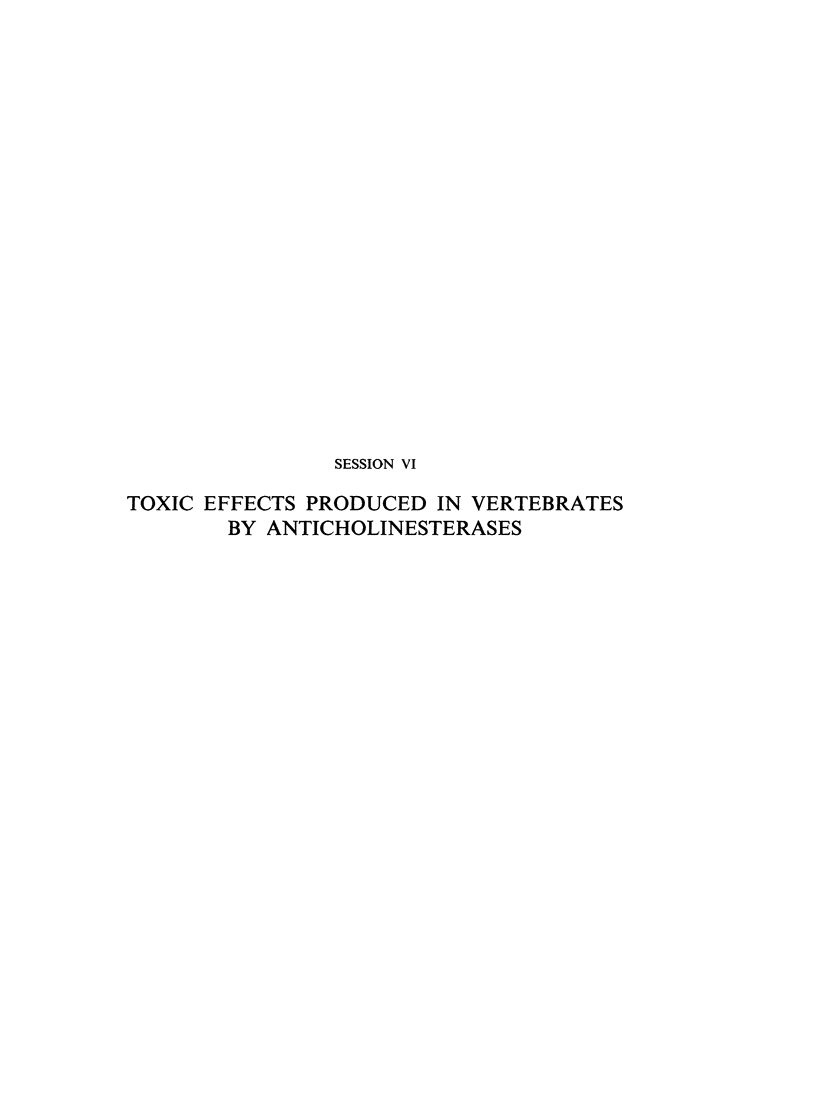
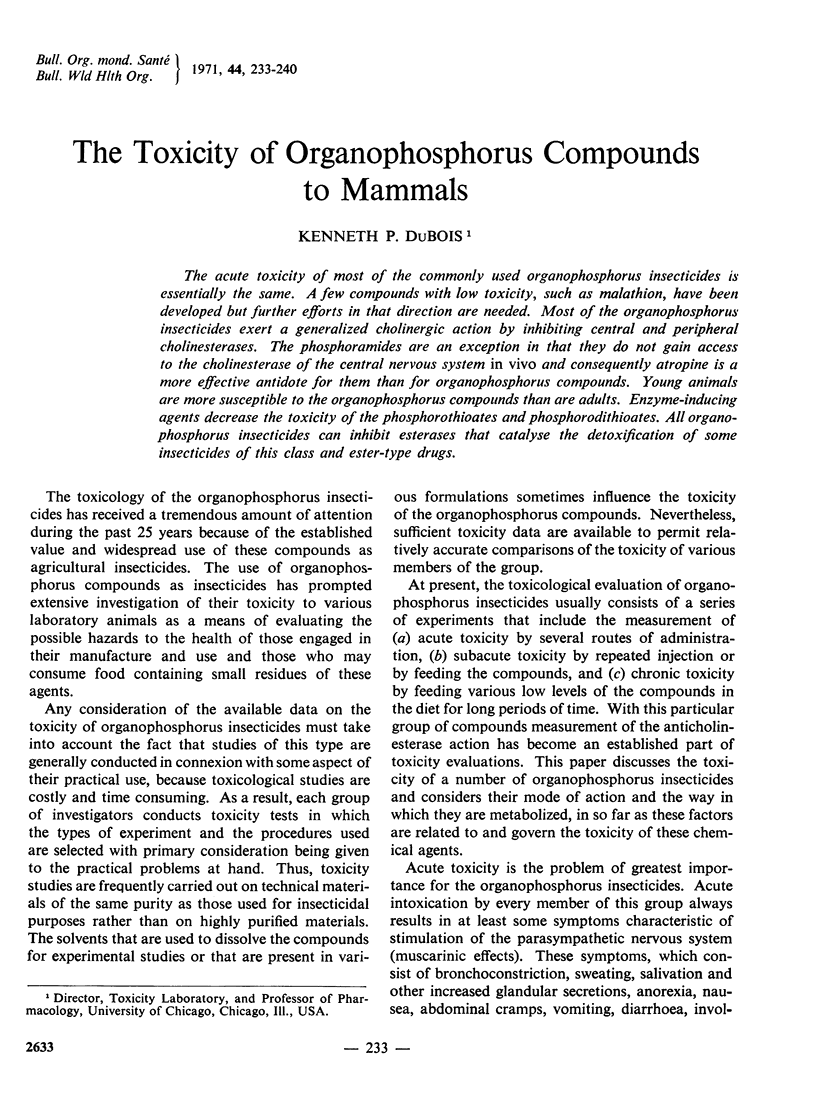
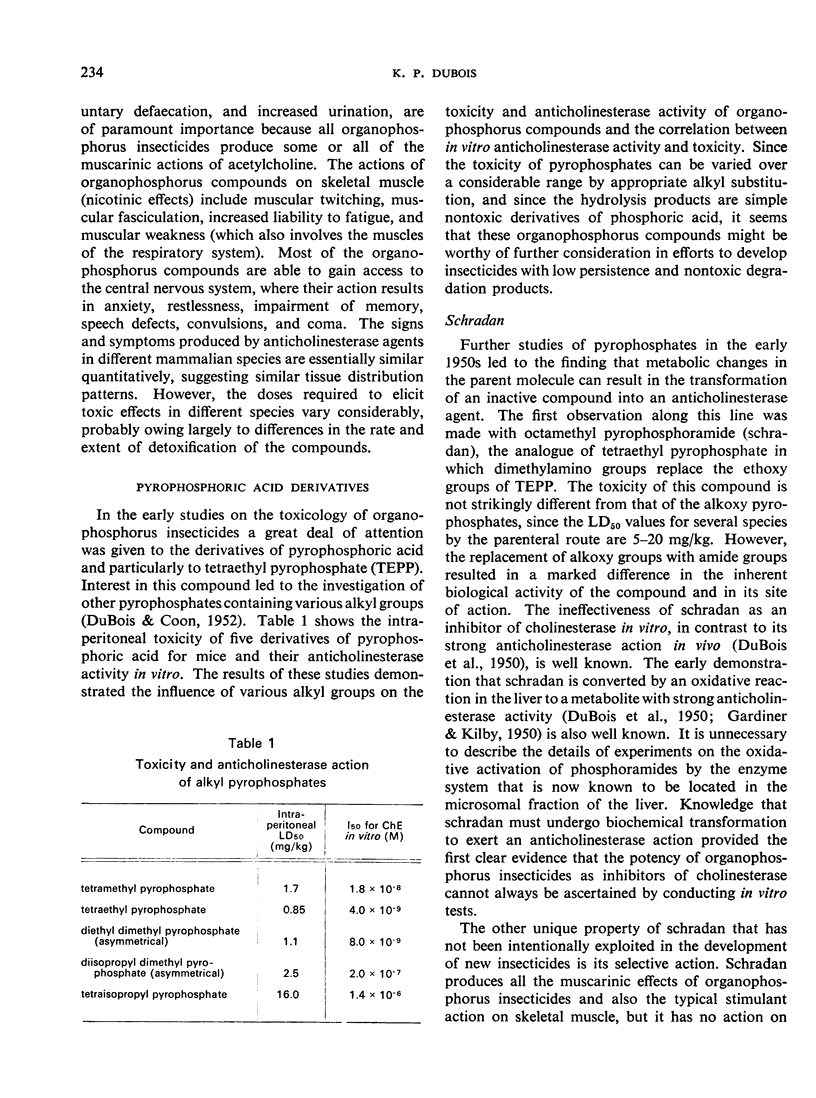
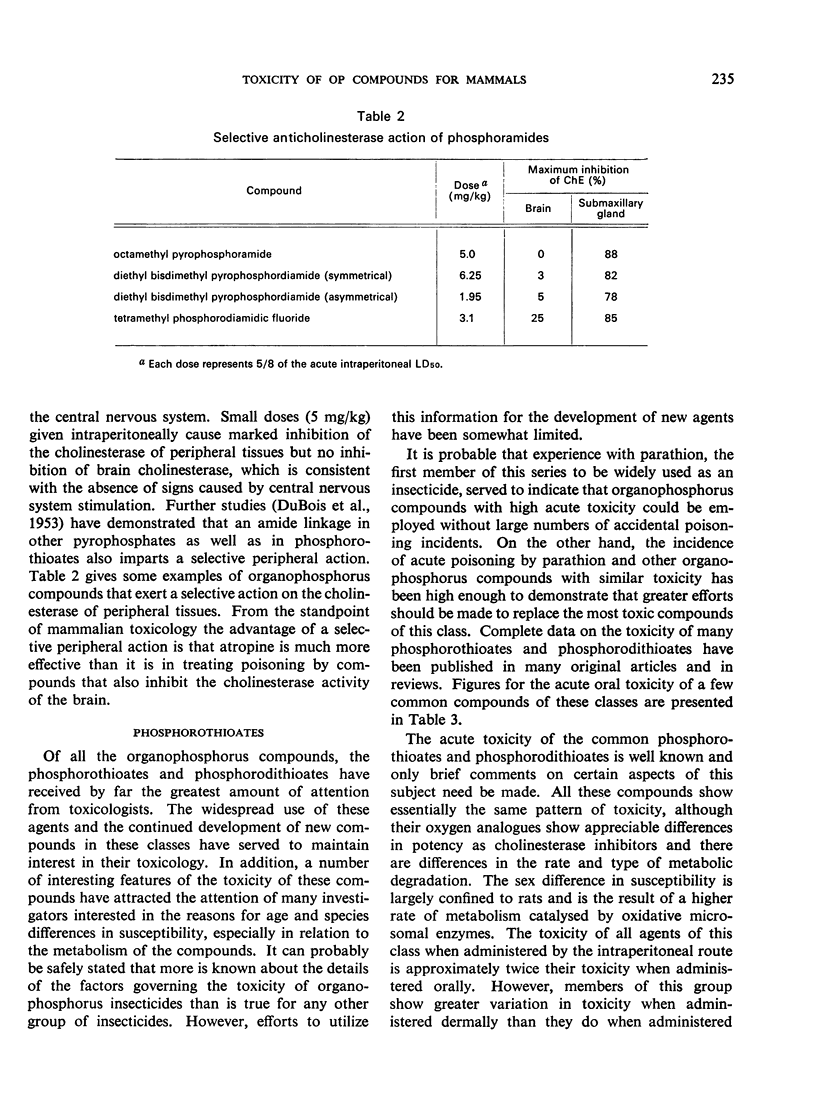
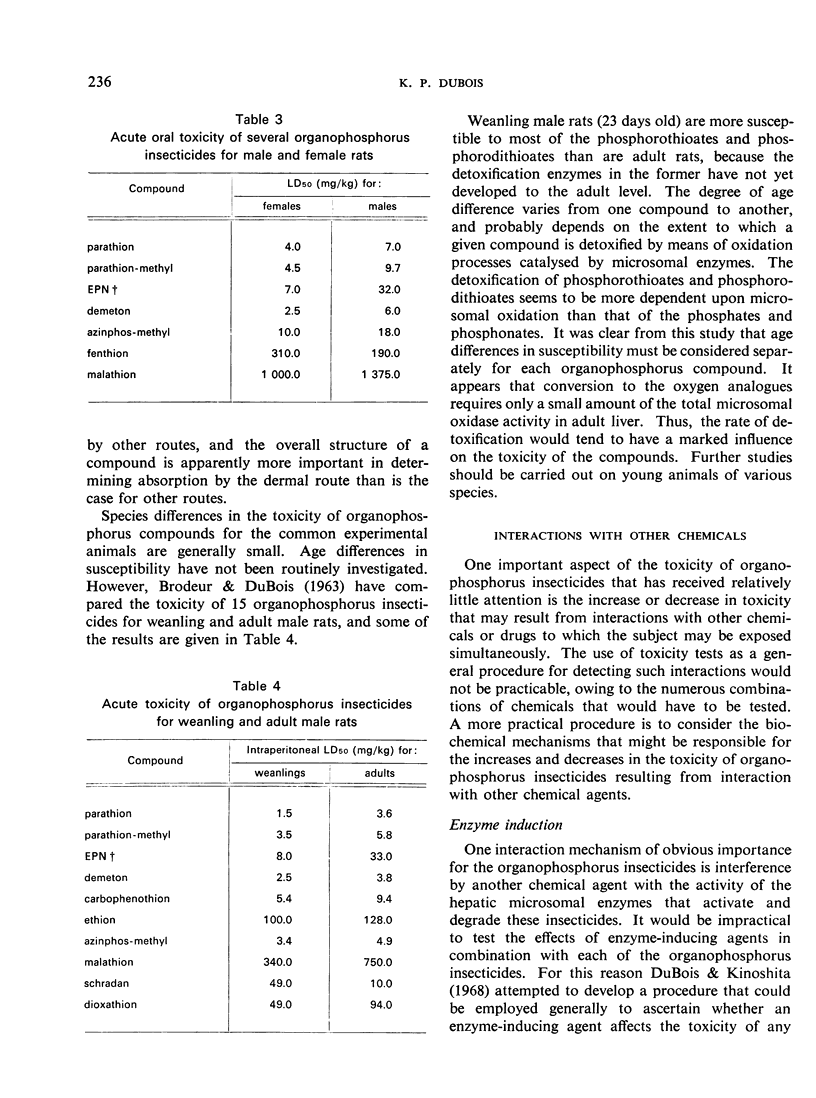
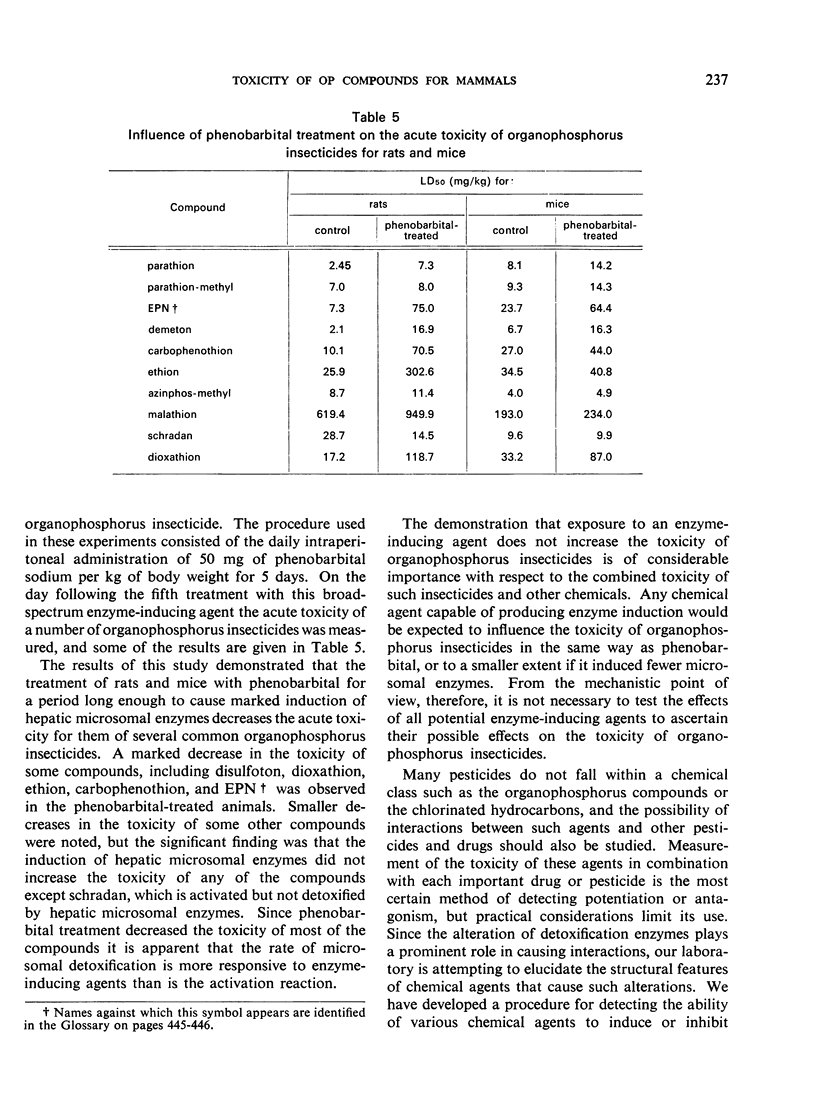
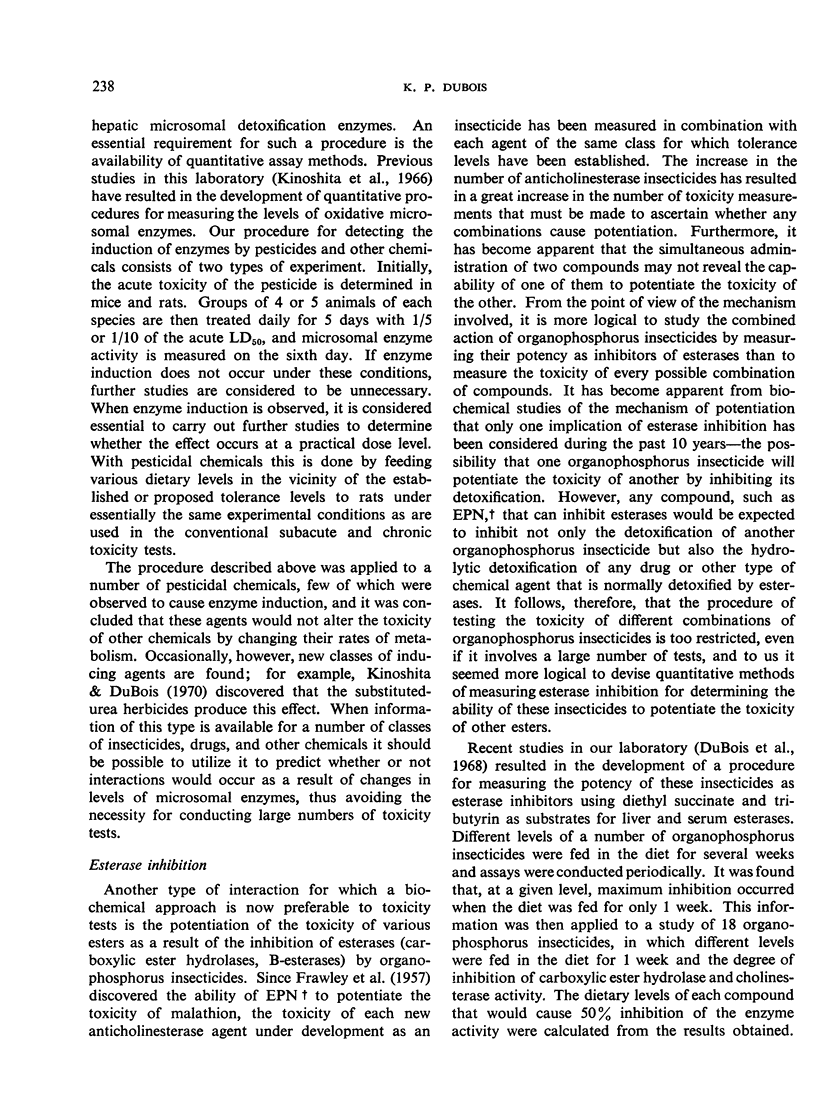
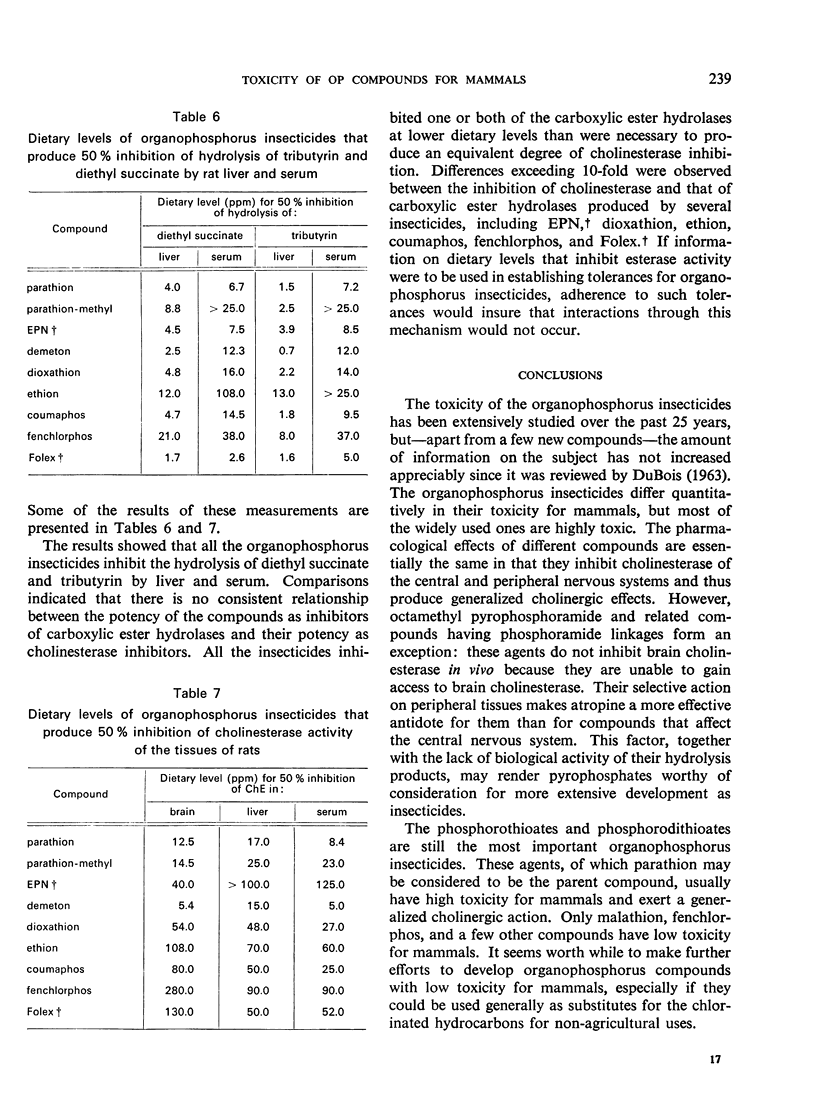
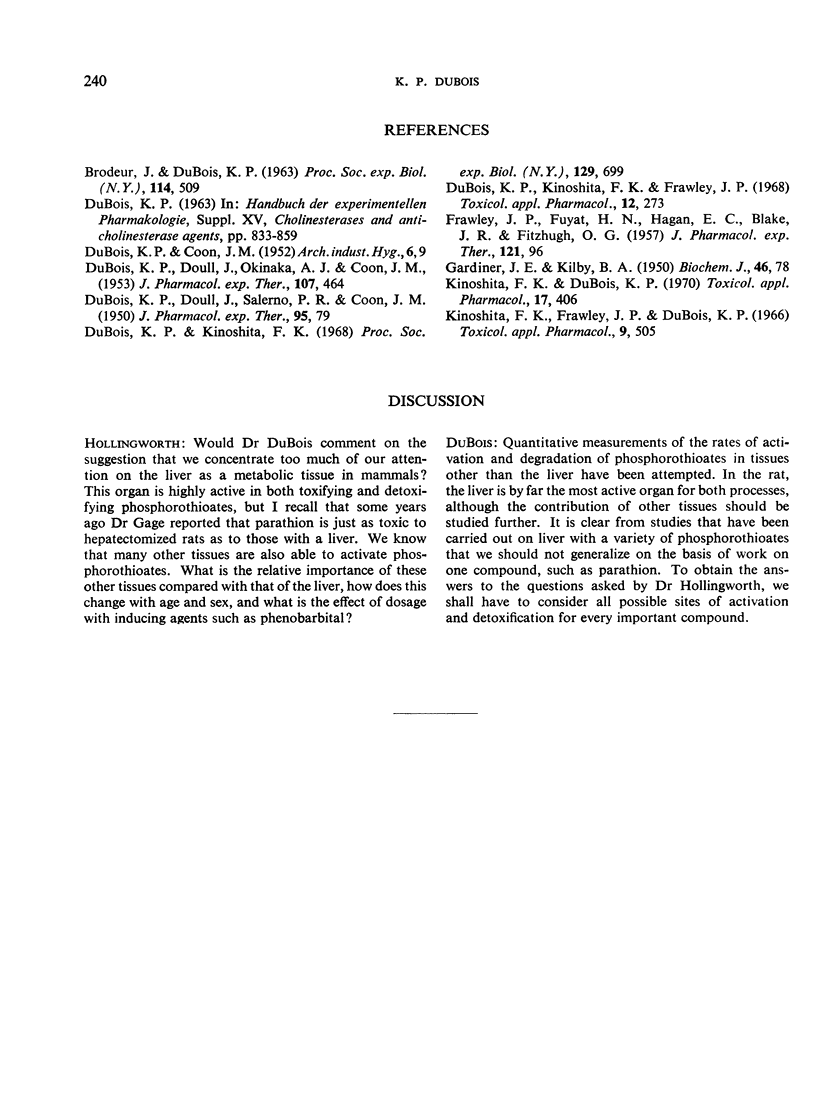
Selected References
These references are in PubMed. This may not be the complete list of references from this article.
- BRODEUR J., DUBOIS K. P. COMPARISON OF ACUTE TOXICITY OF ANTICHOLINESTERASE INSECTICIDES TO WEANLING AND ADULT MALE RATS. Proc Soc Exp Biol Med. 1963 Nov;114:509–511. doi: 10.3181/00379727-114-28716. [DOI] [PubMed] [Google Scholar]
- DUBOIS K. P., DOULL J., OKINAKA A. J., COON J. M. Studies on the toxicity and pharmacological actions of symmetrical and unsymmetrical diethyl bis (dimethylamido) pyrophosphate. J Pharmacol Exp Ther. 1953 Apr;107(4):464–477. [PubMed] [Google Scholar]
- DuBOIS K. P., DOULL J. Studies on the toxicity and mechanism of action of p-nitrophenyl diethyl thionophosphate. J Pharmacol Exp Ther. 1949 Jan;95(1):79–91. [PubMed] [Google Scholar]
- DuBois K. P., Kinoshita F. K., Frawley J. P. Quantitative measurement of inhibition of aliesterases, acylamidase, and cholinesterase by EPN and Delnav. Toxicol Appl Pharmacol. 1968 Mar;12(2):273–284. doi: 10.1016/0041-008x(68)90040-9. [DOI] [PubMed] [Google Scholar]
- DuBois K. P., Kinoshita F. K. Influence of induction of hepatic microsomal enzymes by phenobarbital on toxicity of organic phosphate insecticides. Proc Soc Exp Biol Med. 1968 Dec;129(3):699–702. doi: 10.3181/00379727-129-33402. [DOI] [PubMed] [Google Scholar]
- FRAWLEY J. P., FUYAT H. N., HAGAN E. C., BLAKE J. R., FITZHUGH O. G. Marked potentiation in mammalian toxicity from simultaneous administration of two anticholinesterase compounds. J Pharmacol Exp Ther. 1957 Sep;121(1):96–106. [PubMed] [Google Scholar]
- Kinoshita F. K., DuBois K. P. Induction of hepatic microsomal enzymes by herban, diuron, and other substituted urea herbicides. Toxicol Appl Pharmacol. 1970 Sep;17(2):406–417. doi: 10.1016/0041-008x(70)90198-5. [DOI] [PubMed] [Google Scholar]


